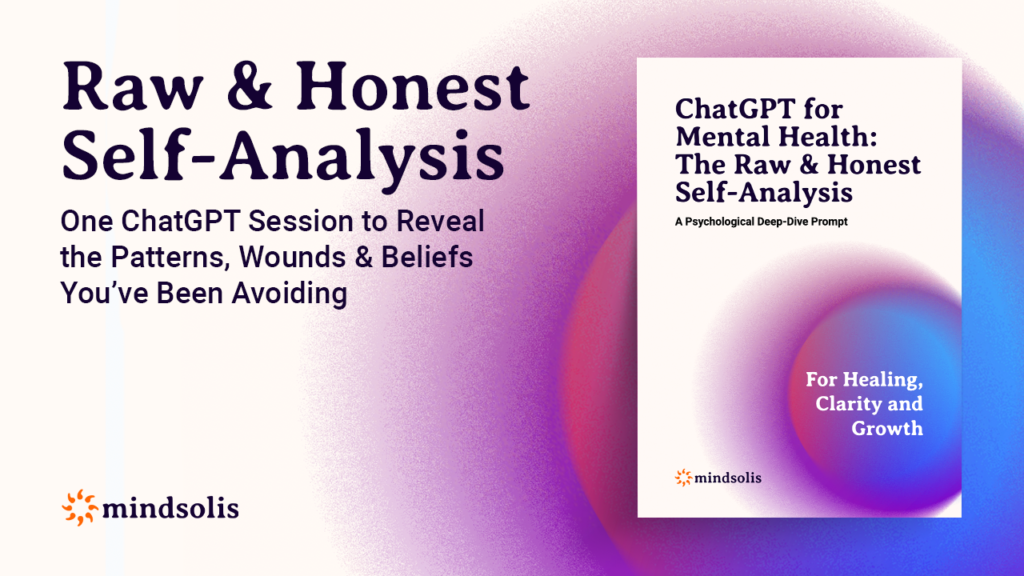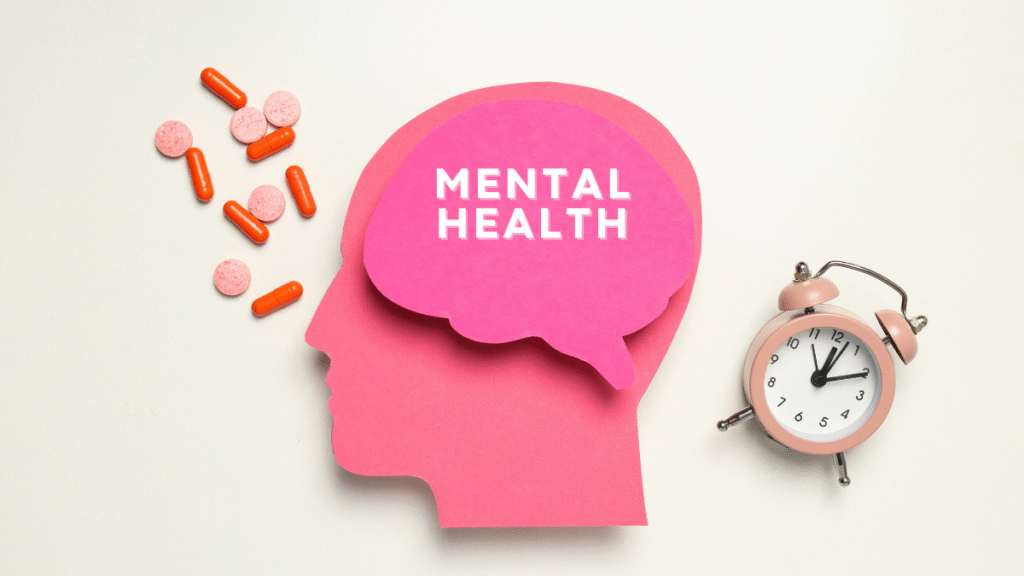ChatGPT Therapy: Confront Fear and Finally Break Free
ChatGPT Therapy ignites bold breakthroughs, guiding you through raw vulnerability into fearless action, exposing hidden strengths, fueling radical growth, and empowering you to finally live without fear.

In This Article
- What Is ChatGPT Therapy and How Can It Help You Confront Fear?
- How Can a Raw and Honest Self-Analysis Help You Break Free from Fear?
- How ChatGPT Therapy Helps You Confront Fear with Clarity
- Breaking Free from Fear Through Guided Self-Inquiry
- Using ChatGPT to Overcome Fear of the Future
- The Science Behind ChatGPT Therapy and Emotional Liberation
- Conclusion: Break Free from Fear with ChatGPT Therapy
- ChatGPT Therapy — FAQ
What Is ChatGPT Therapy and How Can It Help You Confront Fear?
Fear can take root quietly. Over time, it can shape your decisions, limit your freedom, and cloud your sense of purpose. But what if you could safely explore that fear—without judgment or pressure? That’s where ChatGPT therapy comes in. It offers a new way to confront fear by turning an ordinary conversation into a powerful self-reflection tool.
Unlike traditional methods, ChatGPT therapy encourages honest dialogue in a space where you’re fully accepted. You can express your thoughts freely, gain clarity, and start reframing the stories fear has written for you. Even better, it’s available anytime you need it.
In this article, you’ll learn how to use ChatGPT therapy to break free from mental patterns that hold you back. We’ll also explore how this form of guided self-inquiry works—and why it may be just what your inner healing journey needs. If you’re new to this concept, you may want to start with our post on ChatGPT for mental health: Talk without judgment to understand its full potential.
Ready to reclaim your peace and confront fear with confidence? Let’s begin.
How Can a Raw and Honest Self-Analysis Help You Break Free from Fear?

What Happens When You Look Inward Without Filters?
Facing fear often starts with honesty. Not just with others, but with yourself. Most of us carry unconscious beliefs and emotional patterns that quietly shape how we respond to life. A tool like the FREE Raw & Honest Self-Analysis offers space for that deeper inner work.
This isn’t about writing polished reflections or trying to sound wise. It’s about sitting down with your raw truth—without judgment, without rushing to fix anything. The prompts are direct, sometimes even uncomfortable, but they’re designed to invite clarity, not perfection.
How Does This Guide Work Alongside ChatGPT Therapy?
While ChatGPT therapy can reflect your thoughts back to you, this self-analysis tool helps you go one layer deeper. By putting pen to paper or typing without a filter, you access insights your conscious mind might usually avoid. Then, with ChatGPT, you can unpack those realizations, ask deeper questions, or challenge limiting beliefs that surface.
Together, these two practices can form a powerful rhythm: silence and expression, reflection and dialogue.
Why Is Raw Honesty So Important for Inner Healing?
We often try to outthink fear or distract ourselves from it. But healing doesn’t come from avoidance. It comes from courage—the kind that allows you to name what’s true, even when it’s messy. This guide encourages that kind of courage. And when paired with AI-guided support, you create a balanced space where both expression and insight can flourish.
How ChatGPT Therapy Helps You Confront Fear with Clarity
Can AI Understand My Fear?
Fear often thrives in silence. When left unspoken, it can grow stronger. ChatGPT therapy offers a space to voice these fears. By articulating your thoughts, you begin to understand them. This process mirrors the benefits of journaling, where expressing emotions leads to clarity.
ChatGPT doesn’t judge. It listens and responds, helping you explore your feelings. This reflective interaction can be therapeutic. It allows you to confront your fears in a safe environment.
What Makes ChatGPT a Safe Space for Emotional Honesty?
Safety is crucial when addressing fear. ChatGPT provides a non-judgmental space for self-exploration. You can express your thoughts freely, without fear of criticism. This openness encourages honesty and self-awareness.
Engaging with ChatGPT can feel like talking to a supportive friend. It responds with empathy, fostering a sense of understanding. This environment promotes emotional healing and personal growth.
How Can ChatGPT Help You Name and Reframe Fearful Thoughts?
Identifying and reframing negative thoughts is a key step in overcoming fear. ChatGPT assists in this process by helping you recognize unhelpful thought patterns. Once identified, it guides you in reshaping these thoughts into more constructive perspectives.
This technique, known as cognitive reframing, is effective in reducing anxiety. By changing the way you perceive a situation, you can alter your emotional response. ChatGPT supports this by offering alternative viewpoints and encouraging positive thinking.
Breaking Free from Fear Through Guided Self-Inquiry
What Is AI-Guided Mindfulness Practice and How Does It Work?
Mindfulness teaches you to stay grounded. It helps you notice thoughts without reacting. With AI-guided support, mindfulness becomes more interactive. ChatGPT can prompt reflective pauses. It can help redirect your focus inward.
By asking simple, direct questions, ChatGPT encourages present-moment awareness. For instance, prompts like “What are you feeling right now?” or “Where do you sense this emotion in your body?” allow you to connect with your experience. These small moments of inquiry build emotional presence. Over time, that presence can reduce fear’s intensity.
This kind of AI-guided mindfulness is accessible. It doesn’t require formal training. You can use it during a walk, before sleep, or during a stressful moment.
Can ChatGPT Therapy Replace Traditional Therapy for Inner Reflection?
No, ChatGPT therapy does not replace human connection. But it does provide space for self-reflection. Sometimes, we need a tool that listens. One that doesn’t interrupt or judge.
ChatGPT can help uncover emotional patterns. It asks clarifying questions. It reflects what you’ve said. That simple loop—express, reflect, reframe—builds insight. And insight, over time, loosens fear’s grip.
This isn’t a replacement for professional mental health care. But it can deepen the work you do alone. Or support the work you do in therapy. For those who journal or meditate, ChatGPT adds another layer of awareness.
How Can You Use ChatGPT for Daily Emotional Check-Ins?
Fear often hides in the everyday. It shows up in tension, doubt, or hesitation. A daily emotional check-in helps you spot these patterns early. ChatGPT makes that easy. You can create a simple script: “What was a hard moment today?” or “Did I avoid something because of fear?”
Small questions, when asked consistently, reveal big truths. Over time, these check-ins uncover trends. You might see where you shrink. Or where your voice fades.
ChatGPT doesn’t solve your emotions for you. Instead, it helps you witness them. And witnessing is the beginning of change.

Using ChatGPT to Overcome Fear of the Future
How Does ChatGPT Help When You’re Overwhelmed by “What Ifs”?
Fear of the future often starts with questions. What if things go wrong? What if I’m not ready? These thoughts spiral quickly. They cloud your judgment and increase anxiety.
ChatGPT helps interrupt this pattern. It allows you to unpack these “what ifs” with structure. You can write out your fears and see them more clearly. Sometimes just naming a fear reduces its power.
This process builds awareness. It moves your mind from chaos into clarity. ChatGPT offers questions that gently challenge your assumptions. Through this dialogue, you begin to ground yourself again. That shift from reaction to reflection is where growth begins.
Can ChatGPT Help You Set Boundaries With Fear-Based Thinking?
Fear doesn’t always speak the truth. Yet it often controls decisions. That’s where boundaries come in. ChatGPT therapy can help you notice when fear turns from helpful caution into emotional noise.
Using prompts, you can explore the story behind your fear. Then, you can choose which parts to keep. This creates space. You stop reacting out of fear and start responding with intention.
Boundary-setting also means choosing when to stop overthinking. With ChatGPT, you can develop routines to redirect focus. You might use prompts to plan, breathe, or take action—rather than spiraling.
What Are Helpful ChatGPT Scripts for Sudden Waves of Fear?
Fear doesn’t always come gradually. Sometimes, it hits all at once. Having support at that moment matters. ChatGPT can offer short scripts to center your thoughts.
For instance, when fear arises, you can ask: “What part of this is under my control?” Or: “What outcome am I imagining, and how likely is it?” These simple questions bring your mind back to reality.
Repeating grounding phrases can also help. “This feeling is temporary.” “I can respond, not react.” You can customize these inside ChatGPT. That way, they’re always ready when you need them most.
The Science Behind ChatGPT Therapy and Emotional Liberation
Is Talking to an AI Scientifically Proven to Reduce Fear?
Recent studies suggest that interacting with AI like ChatGPT can aid in emotional processing. By articulating fears and anxieties, users may experience a sense of relief and clarity. This process mirrors traditional therapeutic techniques where expressing emotions leads to reduced psychological distress.
Moreover, the non-judgmental nature of AI interactions encourages openness. Users often feel more comfortable sharing thoughts they might withhold in human interactions. This increased transparency can facilitate deeper self-understanding and emotional release.
How Does ChatGPT Encourage Brain-Body Connection Through Words?
Engaging in conversations with ChatGPT can promote mindfulness. By focusing on present thoughts and feelings, users become more attuned to their bodily sensations. This heightened awareness can lead to better stress management and emotional regulation.
Furthermore, the act of verbalizing emotions can activate neural pathways associated with self-reflection. This cognitive engagement helps in restructuring negative thought patterns, fostering a more positive outlook.
What Are the Limits and Strengths of ChatGPT Therapy?
While ChatGPT offers a platform for self-exploration, it’s not a substitute for professional therapy. It lacks the nuanced understanding and empathy that human therapists provide. However, it serves as a valuable tool for those seeking immediate support or unable to access traditional therapy.
The strength of ChatGPT lies in its availability and consistency. It provides a safe space for users to express themselves without fear of judgment. Yet, for complex emotional issues, consulting a mental health professional remains crucial.

Conclusion: Break Free from Fear with ChatGPT Therapy
Fear can be heavy. It can sit in your chest, shape your choices, and dull your joy. But it doesn’t have to stay that way. You have tools. You have insight. Most importantly, you have the ability to change.
ChatGPT therapy creates space to explore fear gently. It invites you to speak honestly and reflect deeply. As a result, fear begins to loosen. With every conversation, clarity grows. This clarity builds confidence, which slowly replaces fear with self-trust.
Moreover, ChatGPT is always there. You don’t have to wait for an appointment. You don’t need the perfect words and you can show up just as you are. And even in silence, progress happens.
Through daily check-ins, guided reflection, or mindful questioning, you can create emotional momentum. Over time, you stop avoiding fear. Instead, you meet it. You listen. You learn. Then, you move forward—more aware, more grounded, more free.
While AI isn’t a cure, it’s a companion. It can’t replace human connection. But it can support you when you feel alone. And that matters.
So if fear has been holding you back, consider starting a dialogue. Use ChatGPT as your sounding board. Let it mirror your thoughts. Let it guide your growth. One step at a time.
Because healing starts with awareness. And freedom begins the moment you decide to face fear—with presence, honesty, and compassion.
You don’t have to do it all at once. But you do have to begin.
ChatGPT Therapy — FAQ
Can ChatGPT therapy really help with fear?
Yes. It helps you reflect, reframe thoughts, and explore fear safely. It’s not therapy, but it supports emotional growth.
How often should I use ChatGPT for self-reflection?
Daily is ideal. But even a few times a week builds awareness and consistency over time.
Can ChatGPT replace my therapist?
No. It’s a tool for support, not a substitute. It works best alongside professional guidance.
How do I start using ChatGPT to confront fear?
Start by asking simple questions. Try journaling fears. Then, reflect with ChatGPT to gain insight and clarity.







